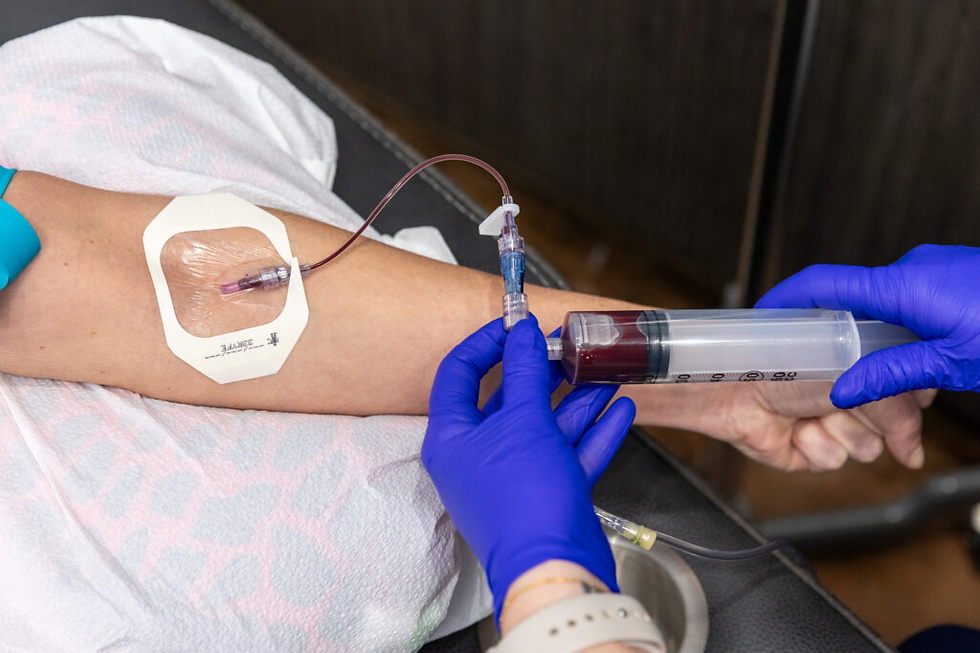Is Electrolysis Hair Removal Permanent?
- dynaichealth69
- Jun 17
- 5 min read
When it comes to long-lasting solutions for unwanted hair, Electrolysis Hair Removal stands out as a trusted method that offers precision, permanence, and doctor-driven care. Among various hair removal procedures available today, electrolysis is the only method approved by medical experts for achieving permanent hair removal across all skin and hair types. This article delves deep into how electrolysis works, why it’s considered a permanent solution, and how expert dermatologists administer it with unmatched precision. The demand for doctor-guided Electrolysis Hair Removal in Dubai is rising, and rightly so, due to its reliability and effectiveness in delivering long-term results.
Understanding Electrolysis Hair Removal
Electrolysis Hair Removal is a medically supervised technique that uses electric current to destroy the growth center of each individual hair follicle. Unlike laser treatments, which target pigmentation, electrolysis works by directly targeting the follicle’s root using a fine probe. This microscopic intervention disables the follicle’s ability to regrow hair, making the outcome more permanent.
Doctors perform this treatment by inserting a thin probe into the hair follicle and releasing a carefully controlled electrical charge. The targeted destruction of the follicle means that once a hair is treated, it doesn’t return. The precision of this technique, when handled by skilled professionals, ensures safe and effective results regardless of hair type, color, or skin tone.

Doctor-Guided Treatment: A Gold Standard of Care
When done by licensed professionals, especially dermatologists or certified medical aestheticians, electrolysis offers a clinical advantage that over-the-counter or spa-based solutions simply can’t match. Doctors analyze your skin type, hair growth cycle, and density before starting the treatment. Each session is customized according to individual physiology, which enhances safety and long-term effectiveness.
Furthermore, physicians use advanced electrolysis machines, often equipped with thermolysis or blend modalities, to adjust the intensity, duration, and frequency of the current. This control ensures that the follicle is adequately treated without harming the surrounding skin, providing not just permanent results but also a comfortable experience.
Is Electrolysis Truly Permanent?
The biggest appeal of Electrolysis Hair Removal lies in its classification as a permanent hair removal method. This is backed by the FDA and supported by decades of clinical usage. Once a follicle is destroyed through electrolysis, it cannot regenerate hair. However, achieving full permanence typically requires a series of sessions, as hair grows in cycles.
Medical professionals carefully schedule sessions to align with the anagen (active growth) phase of hair growth. This ensures that each treated follicle is in its most receptive stage for permanent destruction. Over time, as more follicles are disabled during this active phase, patients experience complete and irreversible hair reduction in the treated area.
How Doctors Administer the Procedure
A doctor-led Electrolysis Hair Removal treatment begins with a skin assessment. The practitioner evaluates:
Hair thickness and coarseness
Skin sensitivity
Target treatment area
Medical history and hormonal factors
Once a treatment plan is in place, the dermatologist uses sterilized, single-use probes to penetrate the follicle. The electric current applied may vary in type:
Galvanic Electrolysis: Uses chemical reactions to destroy the follicle.
Thermolysis: Employs heat to damage the follicle directly.
Blend Method: A combination of both heat and chemical reaction for enhanced efficiency.
The doctor monitors patient response in real-time, making adjustments to settings for maximum comfort and effectiveness. Post-treatment, expert instructions are given to support proper skin recovery, further optimizing long-term results.
Treatment Areas Covered by Doctors
Electrolysis is safe and effective on almost all body areas. Physicians frequently treat the following:
Upper lip and chin
Eyebrows
Jawline and sideburns
Underarms
Bikini line
Chest and abdomen
Fingers and toes
Due to its precision, electrolysis is ideal for sensitive areas such as the face and neckline, where accuracy is critical. Under a doctor’s supervision, these areas are treated with the right probe size, current type, and technique to ensure both safety and efficacy.
What Makes It Different from Other Hair Removal Methods?
Electrolysis Hair Removal remains unmatched when compared to other solutions like shaving, waxing, or even laser treatments. Here's how it stands out under medical care:
Permanence: Unlike lasers that reduce hair density, electrolysis eradicates it.
Universality: Works on all skin tones and hair colors, even white, grey, or blonde.
Precision: Individual follicle targeting offers clean and even results.
Doctor Expertise: Personalized treatment plans crafted by medical professionals ensure patient safety and success.
Doctors also eliminate the guesswork involved in timing or technique, which is especially crucial for complex skin types or hormone-driven hair growth patterns.
Benefits of Electrolysis Hair Removal
Opting for doctor-supervised electrolysis yields a host of benefits:
Permanent Results: Once follicles are destroyed, the hair does not return.
Safe for All Skins: No restriction based on pigmentation or tone.
Tailored Treatments: Every session is customized to individual growth cycles.
No Ongoing Maintenance: Unlike other methods that require monthly upkeep.
Minimal Risk: When performed by trained doctors, the procedure is safe with minimal discomfort.
Patients can enjoy long-lasting smooth skin with confidence, knowing they are under professional supervision throughout the process.
How Many Sessions Are Needed?
The number of electrolysis sessions required varies based on several factors:
Hair density and thickness
Hormonal imbalances
Area being treated
Individual response to treatment
Doctors schedule treatments every 1 to 2 weeks initially, gradually reducing frequency as hair regrowth decreases. Typically, patients may need several months to complete a full treatment cycle. However, once finished, the treated hair will not return — making it a worthwhile long-term investment under professional care.
Ideal Candidates for Electrolysis Hair Removal
Patients of all genders, skin tones, and hair types benefit from electrolysis. It is particularly ideal for:
Individuals seeking permanent hair removal
People with grey, blonde, or red hair not responsive to laser
Patients with hormonal hair growth (PCOS, menopause, etc.)
Anyone wanting precision treatment for delicate areas
Doctors can confirm suitability during consultation, ensuring the method aligns with the patient’s skin health and aesthetic goals.
Why Choose Electrolysis Hair Removal?
Electrolysis Hair Removal offers a world-class standard of care under the guidance of skilled dermatologists and specialists. Medical centers in Dubai are equipped with advanced electrolysis machines, offering both galvanic and blend modalities for high-precision results. The multicultural expertise of doctors ensures personalized solutions for a diverse range of skin tones and hair types.
Additionally, the city's medical regulations promote safe and hygienic practices, making Dubai a leading destination for this treatment. Whether you're a resident or medical tourist, Dubai’s expert-led electrolysis services ensure that you experience permanent hair removal with exceptional care.
Conclusion
For anyone seeking a permanent solution to unwanted hair, Electrolysis Hair Removal remains the gold standard, especially when performed by qualified doctors. Its precision, adaptability to all skin and hair types, and proven long-term effectiveness make it the most comprehensive hair removal technique available today.






Comments